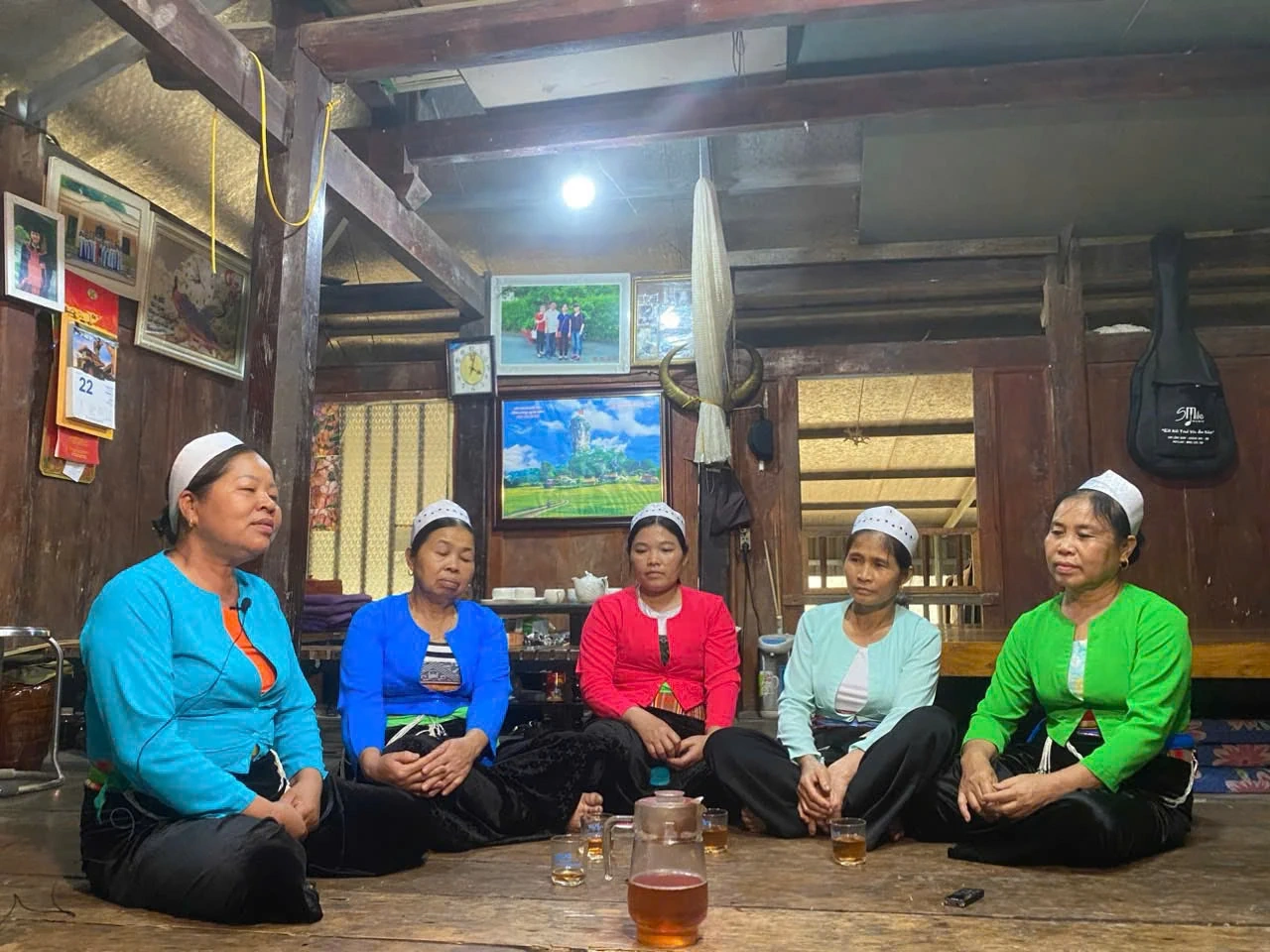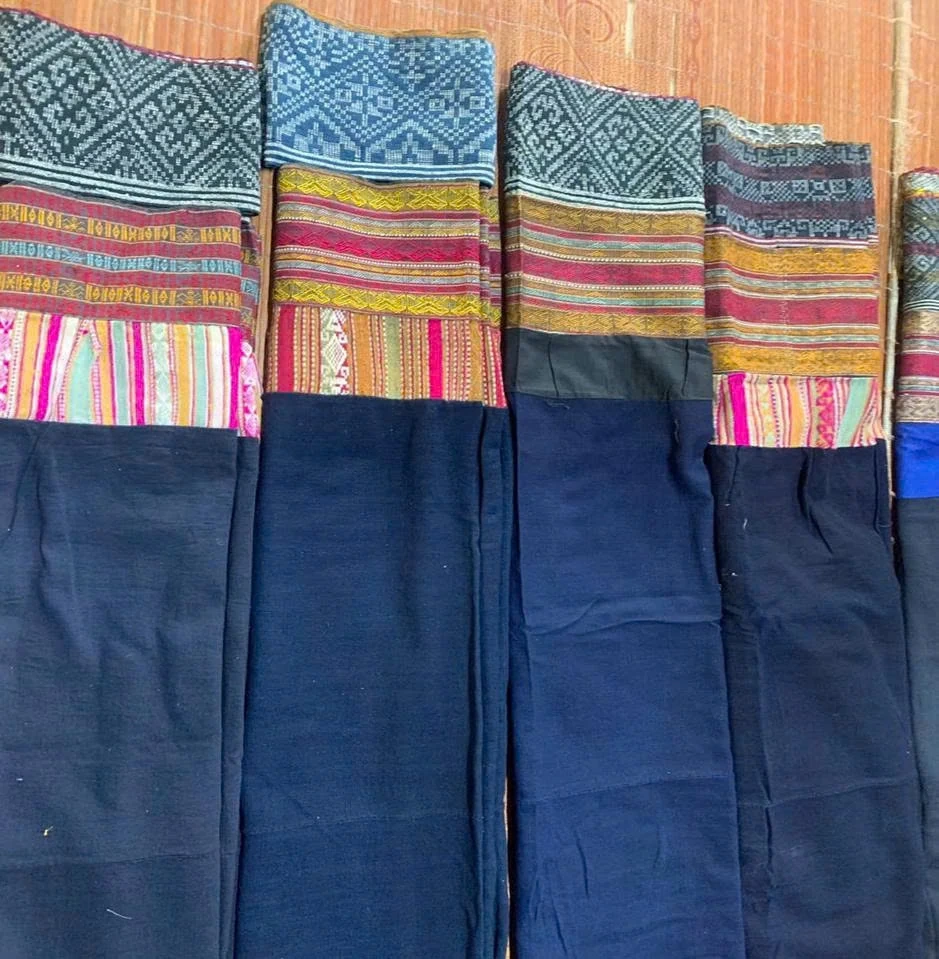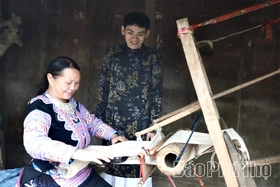{title}
{publish}
{head}
The Ministry of Culture, Sports, and Tourism has officially released the latest List of National Intangible Cultural Heritages, with the newly merged Phu Tho province proudly contributing four new entries. Notably, two of these newly recognized heritages originate from the former Hoa Binh province.

Artisans from Muong Bi commune, Phu Tho province, exchange insights and perform the Bo Meng tune in a traditional stilt house setting.
The two heritages from the former Hoa Binh province include the art of creating skirt patterns of the Muong people in the Tan Lac, Lac Son, and Yen Thuy districts. Classified as folk knowledge and traditional handicrafts, this heritage is a rich repository of decorative and plastic folk art, reflecting a high level of aesthetic sophistication. The practice of embellishing skirts in traditional Muong attire has ancient origins - deeply intertwined with the history of the Muong ethnic group - and constitutes a fundamental element of their cultural identity.
Also from the former Hoa Binh province, Hat Thuong Rang and Bo Meng of the Muong people have been recognized as forms of folk performing art. With a long-standing tradition, this lyrical genre of folk singing was created and developed by the Muong community in the course of daily life, labor, and production. It holds a central role in their spiritual and cultural life as well as in communal rituals and customs.

Decorative patterns on the waistband of traditional Muong skirts.
From the former Phu Tho province, two additional heritages have been added to the national list: the Ken Robbing Festival in Di Nau commune (now Tho Van commune) and Doi Tet of the Muong people in Thu Cuc commune. With these new entries, the merged Phu Tho province is now home to 39 elements of National Intangible Cultural Heritage.
The newly recognized heritages underscore the enduring historical and cultural values they embody, as well as their significance in community life. Their inclusion in the national registry serves to heighten public awareness and reinforce the shared responsibility among authorities, cultural sectors, and local communities to safeguard and promote these invaluable cultural assets.
Cam Le – Bui Nam

baophutho.vn On December 8, 2017, at its 12th session, the UNESCO Intergovernmental Committee for the Safeguarding of Intangible Cultural Heritage...

baophutho.vn Situated in the fertile land of Binh Nguyen (Vinh Phuc), the Huong Canh Communal House Complex — comprising Huong Canh, Ngoc Canh and Tien...

baophutho.vn For generations, whenever people mention Huong Canh Town (former Binh Xuyen District, Vinh Phuc Province), now Binh Nguyen Commune of Phu Tho...

baophutho.vn Kha Cuu Commune was formed by merging three former communes: Dong Cuu, Thuong Cuu, and Kha Cuu, with the Muong ethnic group accounting for over...

baophutho.vn Perched atop Tram Linh Hill, Quoc Te Temple in the former Di Nau Commune — now Tho Van Commune — has long been regarded as a solemn and...

baophutho.vn Located in Giap Lai Commune, this ancient communal house is revered by local residents as the “soul of the Muong village.” It is dedicated to...

baophutho.vn The Thai people are the largest indigenous ethnic group in Mai Chau District, now residing mainly in communes such as Mai Chau, Bao La, Mai Ha,...

baophutho.vn Today, Phu Tho Province is home to hundreds of traditional craft villages — from wood carving, blacksmithing, and bamboo weaving to mechanics,...

baophutho.vn In line with the orientation toward tourism-based economic development, the traditional brocade weaving craft of the Mong ethnic group in Pa Co...

baophutho.vn On the morning of October 25, the opening ceremony of the Mien Doi Terraced Fields Festival 2025 took place in Thuong Coc Commune.